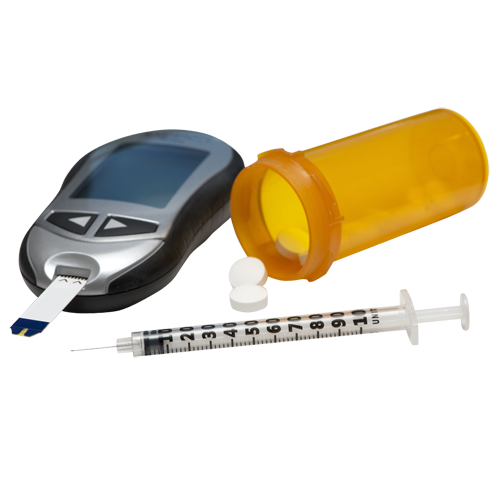If you are living with diabetes, monitoring your blood glucose is a fundamental part of maintaining your health. How can it be integrated into your routine?
What is blood glucose?
Blood glucose is the medical term for the level of glucose (sugar) in the blood. It can be measured at home using various technologies. It can also be tested in a lab following a blood test.
People living with diabetes, especially those taking insulin, need to monitor their blood glucose levels closely to keep them within a healthy range. For most adults, these ranges are between 4 and 7 mmol/L for fasting blood glucose, and between 5 and 10 mmol/L two hours after meals. The targets may be different for some people, so it is necessary to speak to your doctor to determine your glycemic targets.
What is glycated hemoglobin?
Glycated hemoglobin is a blood value that should be measured regularly (every 3 to 6 months) in people with diabetes. Like blood glucose monitoring, measuring glycated hemoglobin is essential for optimal follow-up, as it indicates the level of diabetes control.
Effective diabetes management is essential to prevent short- and long-term complications of the disease. Blood glucose and glycated hemoglobin measurements are complementary and an integral part of the management plan.
What is blood glucose self-monitoring?
Self-monitoring of blood glucose (SMBG) involves measuring and monitoring your own blood glucose with a device or meter. It involves applying a drop of blood from your fingertip to a strip and then inserting the strip into the device to get a reading.
SMBG is used to monitor changes in blood glucose levels and to assess the effect of certain factors on these levels. It also helps detect and correct hypoglycemia and hyperglycemia. You can then make the necessary adjustments to bring your blood glucose levels back within the normal range.
Factors that can cause blood glucose levels to fluctuate include diet, alcohol consumption, exercise, illness (such as an infection), changes in medication, stress or intense emotions, etc.
Choosing the right meter is crucial because you will need to use it often. So, choose a meter that you like and that you find easy to use. These are the two most important selection criteria. You should also consider your abilities, your lifestyle and most importantly, your needs.
Each device has its own features, advantages and disadvantages
How often should I test my blood glucose?
This depends on your type of diabetes, your medication and the adjustments to be made to your treatment. It is essential to clearly establish the blood glucose values to be reached (glycemic targets) and the frequency of testing with the help of the health professional responsible for your follow-up. Follow their instructions carefully.
What is intermittent continuous glucose monitoring (CGM)?
This technology, also known as "flash glucose monitoring", allows for ultra-fast readings using a smartphone or meter. It requires the user to scan a device with a tiny sensor placed under the skin. This sensor must be changed every 14 days. This eliminates the need for a finger prick or test strips, and users appreciate the ease of use. The sensor measures glucose in the interstitial fluid (fluid surrounding the cells).
Compared to meter-and-strip SMBG, intermittent scanning CGS can have many benefits for people with type 1 or type 2 diabetes who are treated with insulin. These include improved glycemic control and shorter duration of hypoglycemic episodes, as well as simplified monitoring.
What is real-time continuous glucose monitoring (CGM)?
This innovative technology is recommended for people with type 1 diabetes who are treated with multiple daily insulin injections or continuous subcutaneous insulin infusion ("insulin pump"). It is also preferred by some people with type 2 diabetes who take insulin. This system uses a device implanted under the skin to monitor blood glucose levels continuously, 24 hours a day.
Blood glucose readings are taken automatically, every 5 minutes. In addition, the results are obtained in real time on a smartphone or receiver and can be shared with others. The system has alarms that alert the user when they are in low or high blood sugar, even when they are sleeping. Real-time CGS helps control blood glucose levels, reduces the risk of hypoglycemia, and provides real peace of mind for the person with diabetes and their loved ones.
Regardless of your age, type of diabetes, medical history or specific needs, there is likely a technology that will allow you to track your blood glucose levels. Our pharmacy-area team can tell you about the options available, help you make the best choice, and explain how to use them. Get the information you need without delay.
Speak to your pharmacist, diabetes nurse, or physician for additional information about blood glucose monitoring.


